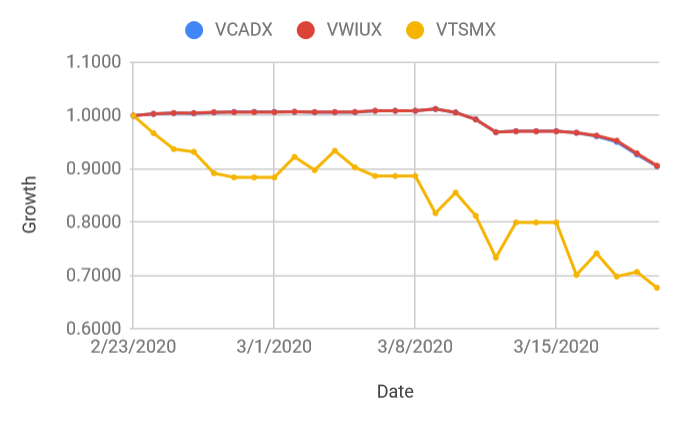
Despite these concerns, pledged revenue legally secures its bonds and state law prohibits a Chapter 9 bankruptcy, so bondholders face little real risk. New York’s MTA experienced a dramatic decline in ridership that’s projected to cause a $3.2 billion shortfall in 2020 revenue and a $5.8 billion shortfall in revenue next year.While the city has identified some solutions, one-time measures alone may not be sufficient to address the projected shortfalls next year. Chicago’s budget challenges have worsened due to the pandemic with a nearly $800 million budget deficit in 2020 and a projected $1.2 billion budget gap next year.High yield muni bonds have staged their own comeback but spreads remain higher by comparison. The spread between high quality muni bonds and Treasuries fell to 126%, far more normal than March levels. Highly rated bonds outperformed lower rated bonds throughout most of the year as investors sought to de-risk their portfolios.Tax revenue has fallen across many states, but GO bonds remain relatively safeguarded in comparison to revenue bonds. How often do municipal bonds default The 1, 5, and 10-year cumulative default rates for all Moodys-rated municipal bond issuers have been 0.0043, 0.0233, and 0.0420, respectively compared to 0.0000, 0.1237, and 0.6750 for Aaa-rated corporate bonds during the same time period. In fact, nursing home and industrial development revenue bonds account for more than two-thirds of all muni bond defaults in 2020. General obligation (GO) bonds outperformed revenue bonds.The lower an issuer's rating, the greater the risk of it defaulting on an interest payment or running into serious financial trouble, so if you have bonds in your portfolio that are being downgraded, it could pay to sell before things get worse. But what you should do is pay attention to bond ratings. Just as investors are often told not to panic-sell and unload stocks when their value declines, so too should you not rush to dump every municipal bond in your portfolio. To put it simply, municipal bonds with a face value of $10,000 could wind up being worth $6,000 after all's said and done.Īnd there lies the danger of municipal bonds today: With so many states and cities hurting for revenue, bondholders face the potential for serious losses, either in the near or not-so-distant future. Unfortunately, bondholders aren't always made whole in the course of bankruptcy proceedings. And while a single missed interest payment won't necessarily correlate to a bankruptcy filing down the line, that possibility can't be discounted. Meanwhile, it's estimated that governments have submitted more than 2,200 disclosures in the course of the COVID-19 pandemic. But once that happens, they risk having their credit ratings downgraded, making them a less healthy, or enticing, investment. Rather, they need to submit disclosures to that effect. Of course, municipalities that anticipate difficulties in meeting the terms of their bond contracts can't just sweep that under the rug.

Bondholders back then took serious losses in the course of the bankruptcy process, and those who own municipal bonds today face a similar risk thanks to the COVID-19 pandemic.

Think back to Detroit, which declared bankruptcy in 2013. Tax-free interest aside, municipal bonds come with historically low default rates compared to corporate bonds, making them a relatively secure investment - most of the time.īut municipal bond defaults do happen. The benefit of municipal bonds is that their interest is always tax-exempt at the federal level, and if you buy municipal bonds issued by your state of residence, you avoid state and local taxes as well. You can buy corporate bonds - those issued by corporations - or you can buy municipal bonds, which are issued by state and local governments. Though investing in stocks is a great way to grow wealth, you need safer investments, like bonds, in your portfolio as well to offset the risk of buying stocks, especially as you start getting closer to retirement.


 0 kommentar(er)
0 kommentar(er)
